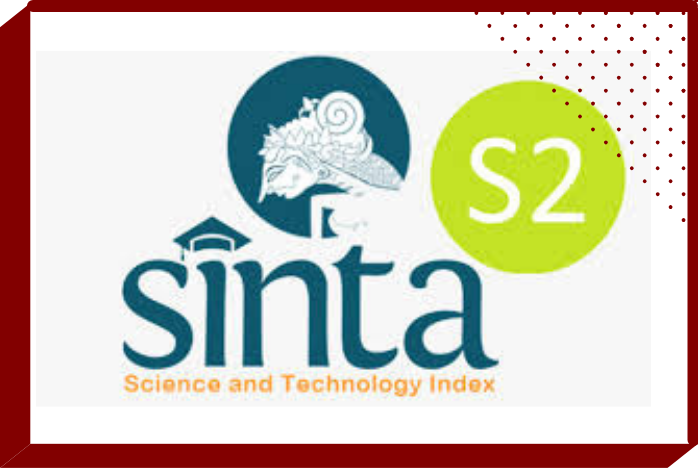Efektivitas Model Blended Learning terhadap Pemahaman Menulis Cerpen dalam Pembelajaran Daring
 Abstract views: 512
,
Abstract views: 512
,
 PDF downloads: 470
PDF downloads: 470
Abstract
This research is motivated by the lack of students' understanding of the ability to write short stories. This study aims to see the effectiveness of the blended learning model on the understanding of short story writing in online learning carried out in class XI SMA Darul Ulum Kepohbaru Bojonegoro. This research method is a quantitative research method with a descriptive approach. The technique used in this research is the distribution of questionnaires and interviews. The data obtained to see the effectiveness is through student learning outcomes to write short stories and student response questionnaires about the blended learning model. The research data were then analyzed using the normality test and linearity test. From the results of the research, it is known that the normality test value of the results of writing short stories has a significance value of 0.026 > 0.05, while the results of student responses have a significance value of 0.679 > 0.05. Then. In the linearity test, the significance value is 0.129 > 0.05, meaning that the blended learning model is effectively used for understanding short story writing.
Downloads
References
Alatas, M. A. (2019). Media Pembelajaran Bahasa Indonesia (H. A. Ghazali (ed.)). CV. Madza Media.
Alatas, M. A., & Albaburrahim. (2021). Penggunaan Teknik Modelling Digital untuk Meningkatkan Kemampuan Membaca Puisi. Jurnal Ibriez : Jurnal Kependidikan Dasar Islam Berbasis Sains, 6(2), 177–192.
Caner, M. (2012). The definition of blended learning in higher education. Blended Learning Environments for Adults: Evaluations and Frameworks, 19–34.
Dwiyogo, W. D. (2018). Pembelajaran Berbasis Blended Learning. PT Raja Grafindo Persada.
Fitriah, F., & Fitriani, S. S. (2017). Analisis Tindak Tutur dalam Novel Marwah di Ujung Bara Karya R.H. Fitriadi. Master Bahasa, 5(1), 51–62.
Hartas, D. (2015). Educational research and inquiry: Qualitative and quantitative approaches. Bloomsbury Publishing.
He, K. (2010). Hybrid Learning and New Development of “IT in Education” Theory. International Conference on Hybrid Learning, 513–531.
Lubis, H. Z., Eriska, P., Bismala, L., Arifin, M., Hidayat, F. P., IKom, M., Rudianto, S., Harfiani, R., Nasution, D. K., & Panggabean, S. (2021). Inovasi Pembelajaran di Masa Merdeka BelajarKampus Merdeka (New Normal); Antara Peluang dan Tantangan (Vol. 1). umsu press.
Onta, M. R. (2018). Efektivitas Penerapan Model Blended Learning dengan Menggunakan Media Pembelajaran Quipper School Ditinjau dari Motivasi Belajar dan Hasil Belajar Siswa Kelas X TKJ-A SMK Asisi Jakarta Tahun Ajaran 2017/2018. Universitas Sanata Dharma.
Panditung, A. R. (2020). Implementasi Kegiatan Pembelajaran Jarak Jauh Era Pandemi Covid-19 di Tingkat SMA. Edudikara: Jurnal Pendidikan Dan Pembelajaran, 5(4), 231–240.
Pohan, A. E. (2020). Konsep pembelajaran daring berbasis pendekatan ilmiah. Penerbit CV. Sarnu Untung.
Rachmayanti, I., & Alatas, M. A. (2020). Implementasi Aplikasi Edmodo dalam Pembelajaran Bahasa Arab Berbasis Daring di PKPBA UIN Maulana Malik Ibrahim Malang. Kadera Bahasa, Volume 12(Nomor 2), 99–110.
Rachmayanti, I., & Alatas, M. A. (2021). Pemanfaatan Aplikasi Whatsapp Group Sebagai Media Pembelajaran Daring Pada Masa Pandemi Covid-19. Jurnal Bio Educatio, 6(4), 68–81.
Ranjini, G. A. (2020). Blended Learning. Social Media in Teaching and Learning, 179.
Sanjaya, R. (2020). 21 Refleksi Pembelajaran Daring di Masa Darurat. SCU Knowledge Media.
Sari, M. (2012). Blended Learning, Model Pembelajaran Abad Ke-21 di Perguruan Tinggi. Ta’dib, 17(2), 126–136.
Setiawan, T. H., & Aden, A. (2020). Efektifitas Penerapan Blended Learning dalam Mahasiswa Melalui Jejaring Schoology di Masa Pandemi Covid-19. JPMI (Jurnal Pembelajaran Matematika Inovatif ), 3(5), 493–506.
Sinaga, E. P. (2019). Blended Learning: Transisi Pembelajaran Konvensional Menuju Online.
Sofyana, L., & Rozaq, A. (2019). Pembelajaran Daring Kombinasi Berbasis Whatsapp pada Kelas Karyawan Prodi Teknik Informatika Universitas PGRI Madiun. Jurnal Nasional Pendidikan Teknik Informatika : JANAPATI, 8(1), 81–86.
Stacey, E., & Gerbic, P. (2009). Introduction to blended learning practices. Effective Blended Learning Practices: Evidence-Based Perspectives in ICT-Facilitated Education, 1–19.
Sugiyono. (2015). Metode Penelitian Pendidikan Pendekatan Kuantitatif, dan R&D. Alfabeta.
Valiathan, P. (2002). Blended learning models. Learning Circuits, 3(8), 50–59.
Wibowo, N. P. (2019). Pengaruh Model Pembelajaran Blended Learning Menggunakan Aplikasi Edmodo terhadap Hasil Belajar dan Keterlibatan Siswa pada Pokok Bahasan Mata dan Kacamata untuk Siswa Kelas XI MIPA 2 SMAN 1 Ngemplak. Universitas Sanata Dharma.
Ghancaran: Jurnal Pendidikan Bahasa dan Sastra Indonesia uses an Open Access Policy under the Creative Commons Attribution-ShareAlike 4.0 International License. Authors publishing in this journal agree to the following terms:
- Ghancaran Journal holds the copyright and grants the journal rights for first publication with the work simultaneously licensed under a

The work is distributed under Creative Commons Attribution-ShareAlike 4.0 International License which allows others to share, copy, and redistribute the material in any media or format and adapt, remix, change, and develop the material even for commercial purposes, as long as it is stated credit and license derivative works under similar terms. - Authors may make additional contractual arrangements for non-exclusive distribution of the journal's published work version.
- Authors are permitted to post their work online (e.g., in institutional repositories or on their websites) before and during submission, as doing so may lead to productive exchange.



















